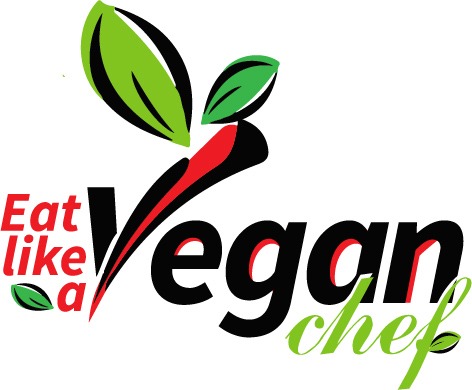
Everything You Need to Know About Cauliflower:
Introduction
Cauliflower is one of the most versatile vegetables you can include in your plant-based kitchen. Whether roasted, blended into soups, mashed as a low-carb alternative, or even turned into pizza crust, this humble cruciferous vegetable is packed with nutrients and culinary potential. In this guide, we’ll explore everything you need to know about cauliflower—from its health benefits and storage tips to the best cooking methods and seasoning pairings.
Why Cauliflower Deserves a Place in Your Kitchen
Cauliflower belongs to the Brassicaceae family, which includes broccoli, Brussels sprouts, and cabbage. It’s rich in essential vitamins and minerals, offers an array of health benefits, and can be used in countless recipes.
Health Benefits of Cauliflower
1. Rich in Nutrients
Cauliflower is an excellent source of vitamins C and K, folate, and fiber. One cup of raw cauliflower provides nearly 77% of the recommended daily intake of vitamin C, which supports immune function and skin health.
2. Supports Digestive Health
Being high in fiber, cauliflower promotes healthy digestion and gut health. It contains both soluble and insoluble fiber, aiding in regular bowel movements and promoting a diverse gut microbiome.
3. Anti-Inflammatory Properties
Cauliflower is packed with antioxidants such as sulforaphane, which helps reduce inflammation and may lower the risk of chronic diseases like heart disease and cancer.
4. Supports Weight Loss
Low in calories and high in fiber, cauliflower is a perfect addition to weight management diets. It helps keep you full longer while providing essential nutrients.
5. Heart Health Benefits
Sulforaphane, a compound found in cruciferous vegetables, has been shown to improve blood pressure levels and reduce oxidative stress, supporting heart health.
How to Choose the Freshest Cauliflower

When shopping for cauliflower, look for the following characteristics to ensure you’re getting the best quality:
- Firm and Compact Head: The florets should be tightly packed and firm, without any soft spots.
- Bright and Uniform Color: Whether white, purple, orange, or green, the color should be vibrant with no browning or discoloration.
- Fresh Leaves: If the cauliflower has leaves attached, they should be crisp and green, not wilted.
- No Strong Odor: A fresh cauliflower should have a mild, slightly sweet scent. A strong or sulfur-like odor indicates it’s past its prime.
Best Ways to Store Cauliflower
Proper storage ensures your cauliflower stays fresh for as long as possible:
- Refrigerate: Store unwashed cauliflower in a perforated plastic or produce bag in the crisper drawer. It lasts up to a week.
- Cut and Store: If you’ve cut the cauliflower into florets, keep them in an airtight container in the fridge and use them within 3–4 days.
- Freezing: Blanch cauliflower florets in boiling water for 3 minutes, then transfer them to an ice bath. Drain and store in a freezer-safe bag for up to 6 months.
Best Cooking Methods for Cauliflower
Cauliflower’s versatility makes it an excellent base for many dishes. Here are the best ways to cook it:
1. Roasting
- Enhances cauliflower’s natural sweetness and creates a crispy texture.
- Toss florets with olive oil (or veggie broth for oil-free cooking), salt, and spices.
- Roast at 400°F (200°C) for 25-30 minutes until golden brown.
2. Steaming
- Preserves most of the nutrients.
- Steam for 5–7 minutes until fork-tender.
3. Boiling
- Best for making cauliflower purée or soups.
- Boil for 10 minutes until soft.
4. Sautéing
- Quick and easy way to cook cauliflower.
- Cook in a pan with a little water or vegetable broth for 5–7 minutes.
5. Mashing
- A great alternative to mashed potatoes.
- Boil or steam cauliflower until soft, then blend with plant milk, garlic, and spices.
6. Ricing
- Process raw cauliflower in a food processor to create a rice-like texture.
- Sauté for a few minutes or steam for a lighter alternative to traditional rice.
7. Grilling
- Perfect for cauliflower steaks.
- Slice cauliflower into thick steaks, season, and grill for 5 minutes per side.
Best Spices and Seasonings for Cauliflower
Cauliflower absorbs flavors well, making it ideal for seasoning. Here are some of the best spices and herbs to pair with it:
- Garlic and Onion Powder – Enhances its natural taste.
- Smoked Paprika – Adds a smoky depth of flavor.
- Turmeric – Gives a warm, earthy note and a beautiful golden color.
- Cumin and Coriander – Perfect for Middle Eastern and Indian dishes.
- Curry Powder – Pairs well with coconut milk for a creamy curry.
- Lemon Zest – Brightens up roasted or sautéed cauliflower.
- Nutritional Yeast – Adds a cheesy, umami flavor, perfect for dairy-free recipes.
FAQs & Common Mistakes
1. Why does my cauliflower turn mushy when cooked?
- Overcooking is the main reason. To maintain its texture, use quick-cooking methods like roasting or steaming.
2. How can I prevent cauliflower from smelling strong when cooking?
- Add a splash of lemon juice or vinegar to the cooking water.
3. Can I eat cauliflower raw?
- Yes! It makes a great addition to salads or veggie platters.
4. How do I stop cauliflower from browning in the fridge?
- Store it in a perforated bag and avoid moisture buildup.
Final Thoughts
Cauliflower is a powerhouse vegetable that deserves a place in every kitchen. Its health benefits, culinary adaptability, and ability to pair well with various flavors make it a must-have ingredient. Whether you enjoy it roasted, mashed, or riced, cauliflower can add both nutrition and taste to your plant-based lifestyle.
What’s your favorite way to cook cauliflower? Share your thoughts in the comments below!
